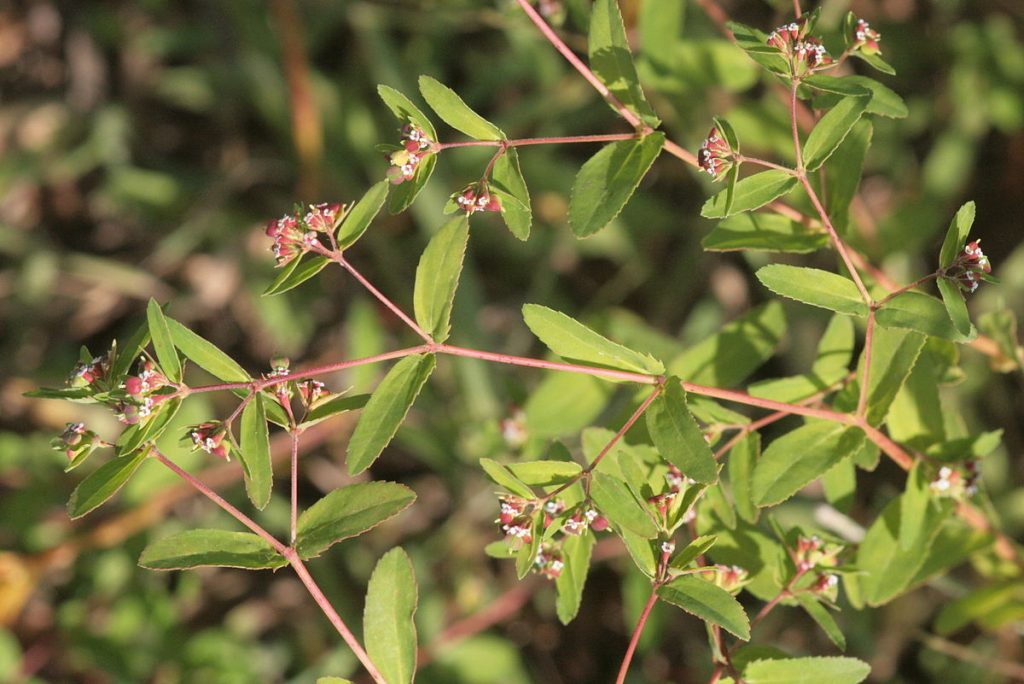
Also called eyebane, nodding spurge is an annual herb and a member of the euphorbia family, Euphorbiaceae, that also includes poinsettia, caster oil plant, and cassava. It is native to North American and can be found in the eastern two-thirds of the US and California in disturbed sites such as gardens, fields, pastures and wastes areas as well as along roadsides and railroad tracks. It prefers full sun and dry,lean soil but adapts to a wide variety of soil conditions.PhotoCredit HermannSchacner Wikipedia Commons
Description: Growing from a slender taproot, nodding spurge has pinkish red stems that are three to eighteen inches tall and carry opposite oblong leaves up to two inches long. The leaves have smooth or toothed margins and their upper surface may have a red blotch in the middle. Young leaves are covered with fine curled hairs. Leaves and stem contain a milky sap that may irritate the skin. Male and female flowers lack petals and are borne in a cluster called a cyanthium that is a cup like structure with flat four white or red petal-like appendages. Several cyanthia develop near the end of major stems from summer into fall and give way to a three sided capsule containing three seeds.
Control: Hoe or pull seedlings as soon as they appear and pull, cut, or mow larger plants before they set seed. Care should be taken to remove all of the root. Solarization of the soil or a dense mulch of cardboard or newspaper are effective for large infestations.